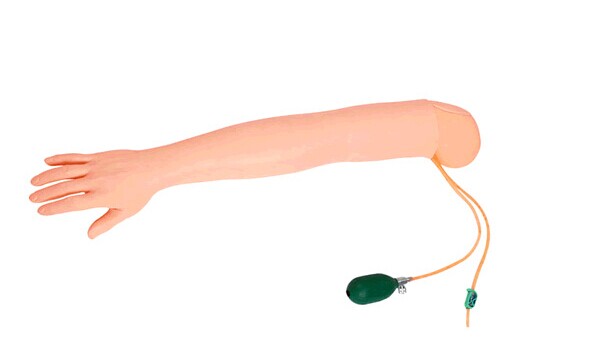

Article tag: Arterial puncture arm model| arterial puncture model|
Compared with traditional training methods, the arterial puncture arm model has shown many unique advantages in medical education and skill training, which not only improves the efficiency and effect of learning, but also enhances the safety and reliability of practical oper...
Compared with traditional training methods, the arterial puncture arm model has shown many unique advantages in medical education and skill training, which not only improves the efficiency and effect of learning, but also enhances the safety and reliability of practical operation.

First, authenticity and immersion are one of the most significant advantages of the arterial puncture arm model. Traditional training methods often rely on theoretical teaching, graphic presentations or watching videos, which can provide a certain knowledge base, but can not let students experience the practical operation of artery puncture. The artery piercing arm model creates an almost realistic operating environment for students through highly simulated skin, blood vessels and blood flow systems. Students can carry out real puncture practice on the model, feel the elasticity of blood vessels, the splash of blood and the sense of accomplishment of puncture success, and this immersive experience greatly improves the effect of learning.
Second, repeated practice and risk-free manipulation are another major advantage of the arterial puncture arm model. In traditional training, due to the limitations of resources and conditions, it is often difficult for students to get enough practical opportunities. When using the arterial puncture arm model, students can practice repeatedly without limitation of time and number of times until they have mastered the puncture technique. More importantly, this practice is carried out in a risk-free environment and does not bring any harm to real patients, thus guaranteeing the safety and ethics of medical operations.
In addition, personalized teaching and immediate feedback are also unique advantages of the arterial puncture arm model. Traditional training methods often adopt a "one-size-fits-all" teaching mode, which is difficult to meet the learning needs of different students. The artery puncture arm model can be personalized according to the actual situation of students, such as adjusting the thickness, position, elasticity and other parameters of blood vessels to adapt to the practice needs of students at different levels. At the same time, the model can also be equipped with an intelligent scoring system or teacher guidance system to provide immediate feedback and evaluation of the student's operation, helping the student to find and correct errors in a timely manner.
Finally, in terms of resource utilization and cost control, the arterial puncture arm model is superior to the traditional training methods. Although the model itself requires a certain cost input, in the long run, it can greatly reduce the waste of resources and cost increase caused by improper operation in the actual operation. At the same time, because the model can be used repeatedly and adapted to multiple teaching scenarios, it is more cost-effective than traditional training methods.
To sum up, the arterial puncture arm model has unique advantages in medical education and skill training, which will further improve the teaching quality and practical operation ability of students.